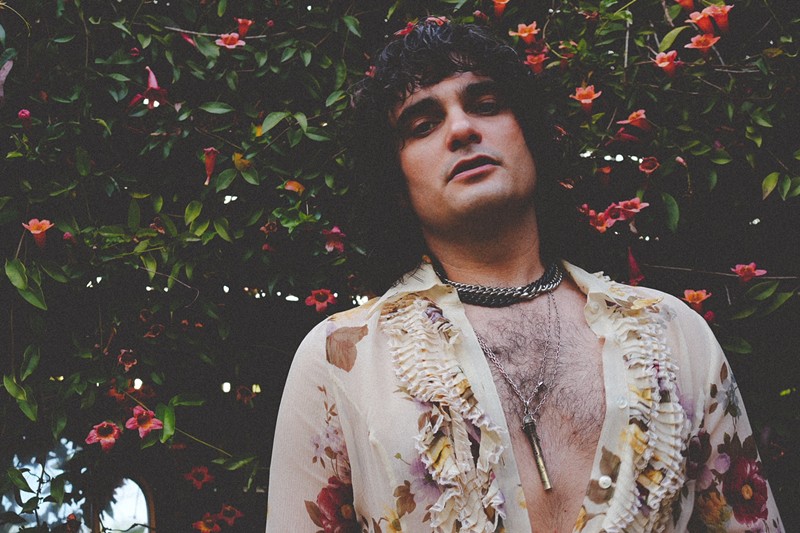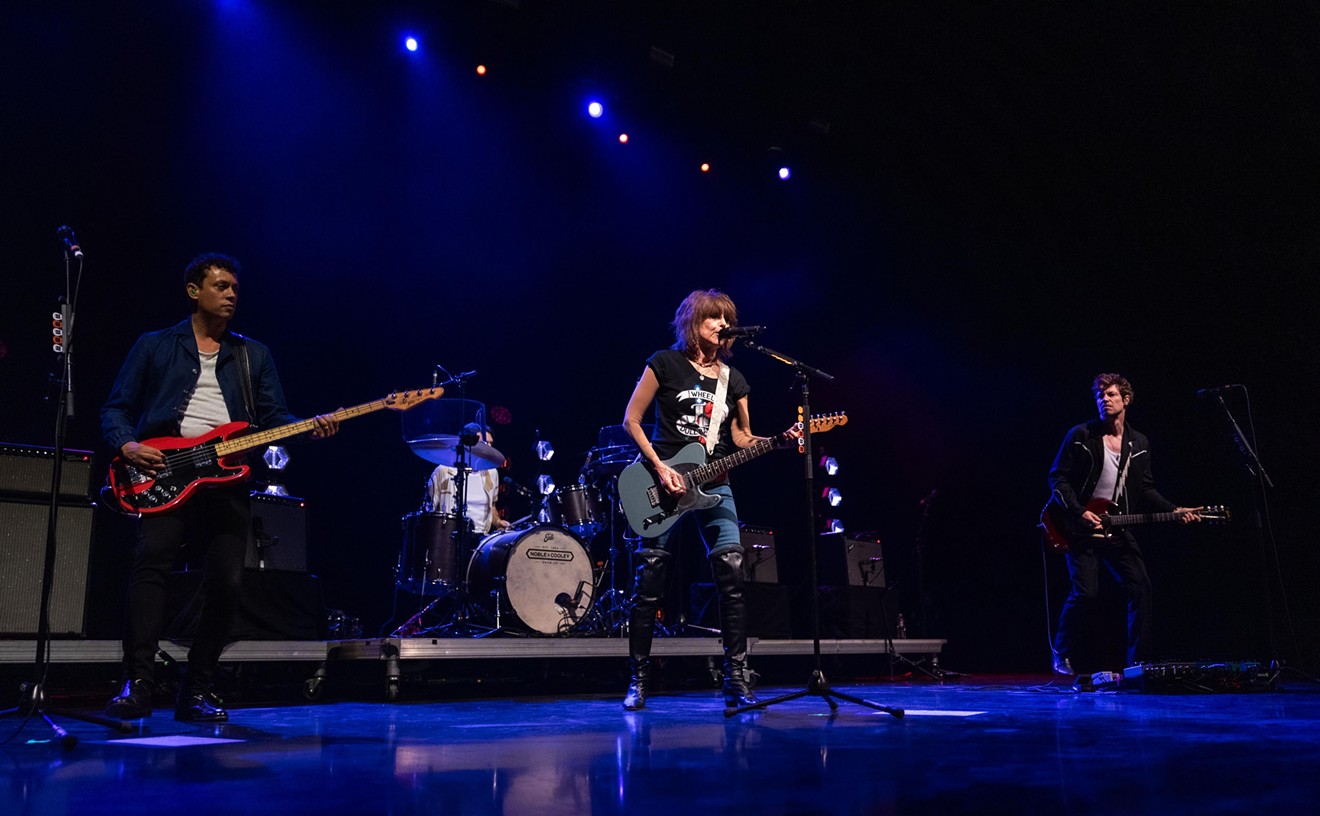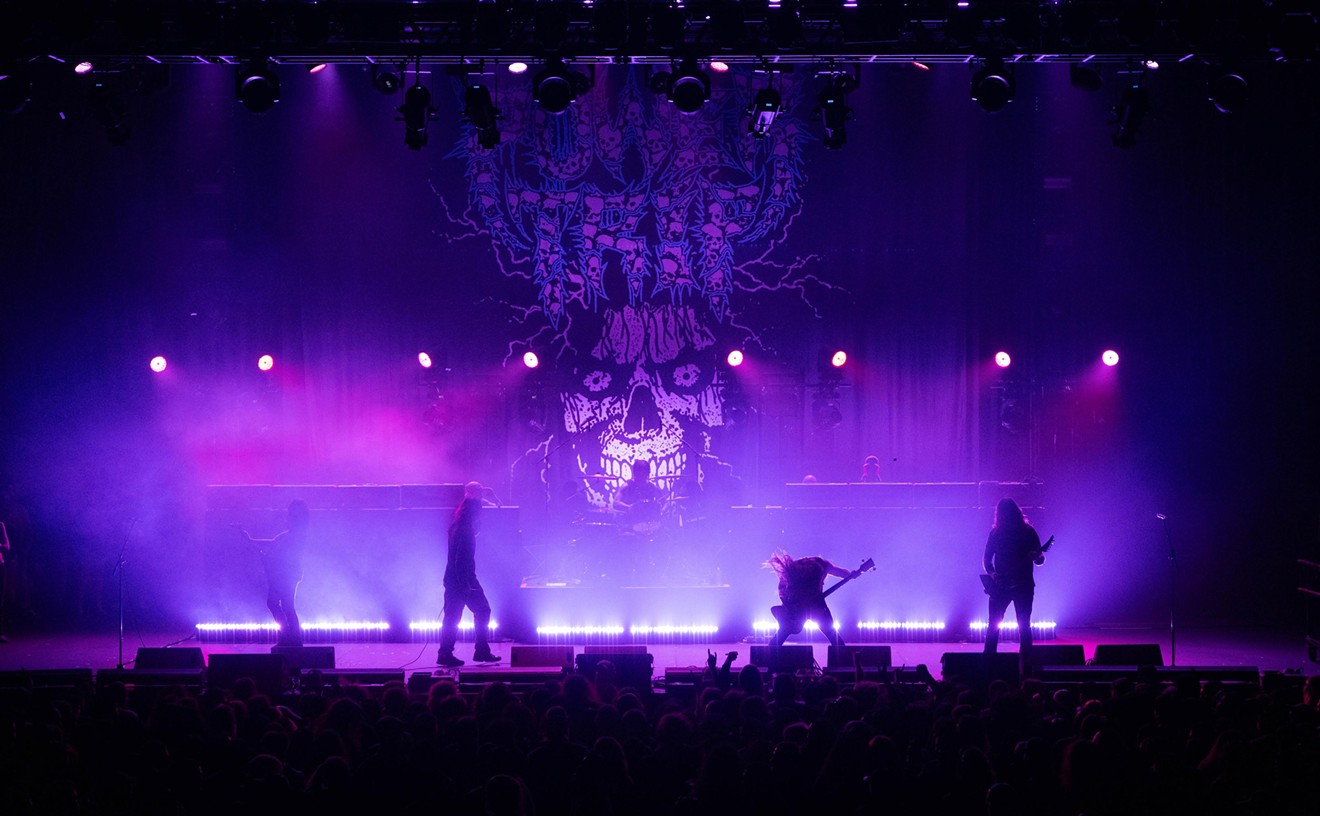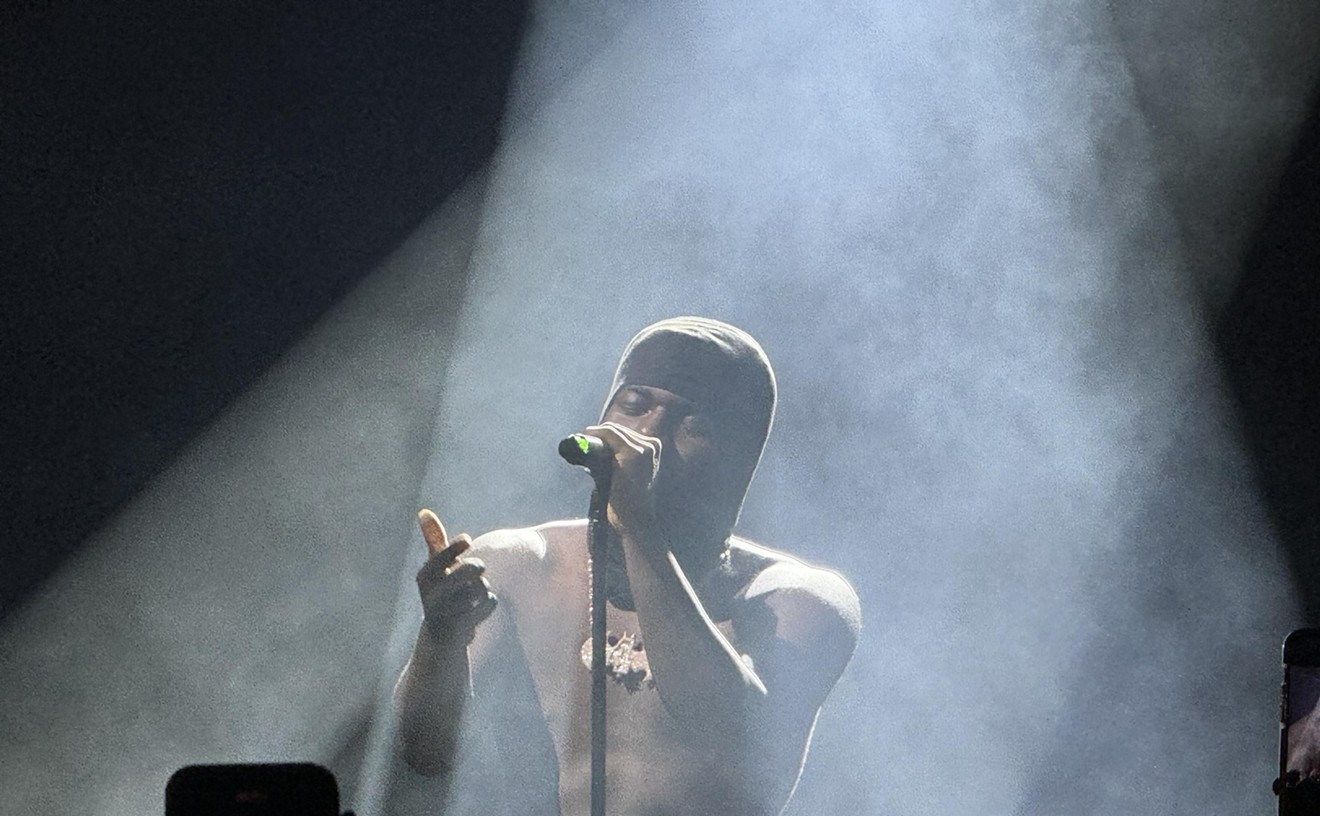And he's still writing music with catchy chords and sequential narratives that tell a story of progression. On June 30, the group is releasing a new single, “Gin & Roses,” a love song about love itself. The song plays on a theme seen in one of the biggest hits on their last album, "Gin & Tonic," about a twisted, toxic relationship involving lots of bitching, little listening, and drinking, of course, gin and tonic.
“'Gin & Tonic' established our sound,” says Santa Maria, “and ‘Gin & Roses’ established the direction we’re going in.”
"Gin & Tonic" depicts a toxic relationship, but “Gin & Roses” soberly and purely touches on the lead singer's growing relationship with love.
“I get bored really easily,” he says, “and I hate being bored. However, I don’t want people who are into us to get bored, so we keep things interesting for our fans and for us. I’m a huge Bowie fan, and one of my favorite things about him, Bowie in the Ziggy Stardust era was totally different from anything he did. He always kept it fresh, always kept it interesting.”
With an emphatic rock star look, Nick Santa Maria shakes his Keith Richards-reminiscent, messy black hair many times as he wades into the crowd while singing, sporting clothes straight from the '80s punk scene: leopard, leather, fur, chains, leopard and more leopard.
His wife, Claire Santa Maria, is a fashion designer who has many notes on his style.
“The haircut changed everything,” she says.
Santa Maria humbly embraces the support of his partner, who's been invaluable in helping him establish himself as an artist both in the field of business and in terms of fashion.
“I love that fashion and music interplay,” he says.
Coming from a background in country music and punk rock, his style took some breaking and innovating.
“I’ve always been really into fashion and love how every style has a look," Santa Maria says. "That’s one of the reasons we called the band The Dirty Shirts, because we knew that had a specific look. I wanted it to be very George Harrison-dark and Marc Bolan-glam rock. It kind of ended up bringing those things together, and I think she saw it and made me feel better about those things. Country and punk rock are very low key; she helped me embrace the expressive fashion I wanted to do.”
The singer has grown in more ways than one, becoming a trendsetting figure and bandleader since the departure of band co-founder Cameron Moreland. Although “there’s no beef,” as Santa Maria says, and the two remain close, he’s had to readjust his understanding of being a musician, accepting and embracing artistic autonomy.
“It’s been kind of a weird year with the lineup,” he says. “I’m really lucky to have a bunch of incredible artists to work with, but I grew up playing punk rock, so I’ve got this ‘it’s got to be a band,’ musketeers outlook, and everyone’s working musicians, so everyone’s got so many things going on. So to be able to keep our thing going, we had to kind of expand.
“It’s weird, because I write in a bunch of different ways. I write with whoever I’m playing with, what’s best for the group. I look at it like we might have five people on stage, but there could be 15 people involved in The Dirty Shirts. It was definitely a learning curve for me to get ahold of that thinking, that it doesn’t have to be the same five people all the time. I look at it as we’re all playing on the same team. I’ve had to change my mentality to focus on the end goal, my end goal.”
Though he seems to always refer to The Dirty Shirts as a “we,” Nick Santa Maria has had to step up and take charge since Moreland left the band. With the help of his wife, he’s managed to focus on the brand, keep up the momentum and stay inspired creating music.
“I’ve always been really into fashion and love how every style has a look. That’s one of the reasons we called the band The Dirty Shirts, because we knew that had a specific look. I wanted it to be very George Harrison-dark and Marc Bolan-glam rock." – Nick Santa Maria
tweet this
“Everything we’re doing now is Chapter 2 of The Dirty Shirts,” he says, “and the first chapter was great, but it’s hard — being an artist, it’s difficult. There’s so many people we started with, and I think we’re all experiencing the same thing, getting into two, three going on four years for some peoples’ projects. How do we keep this going? I think you can come in and make a splash but how do you keep the momentum up without repeating yourself?”
Santa Maria does this with his writing, creating narratives that play on one another and evolve through his albums, like with his tracks “Gin & Roses” and “Gin & Tonic.” He says “Gin is like a character,” though the relationship has changed.
“Gin is kind of a theme for our stuff and I look at it like I said, we’re in Chapter 2,” he says. “Maybe after the third record I’ll be something completely different. My thing is, I want to just keep creating and keep giving. I don’t know where sonically that will take us, as far as the sound and instrumentation.”
His writing has a theme of using comparisons that are stylish in form and sound and are relatable to audiences, but mostly they're definitive of his ever-evolving repertoire.
“There’s a lot of things in our music that’s a dichotomy between two feelings,” he says, “what feels good and what is good. The French term for an orgasm, la petite mort, ‘the little death.’ It’s kind of the light and the shade. The brightness and the dark, a lot of our lyrics come out of very human feelings, feelings I feel.
“Everything’s not necessarily biographical, but it does come from a very human place. That’s what’s fun, some of our songs are very dance-y and our live shows are very energetic. What I aim for is a very cinematic flow, where there’s ups and downs to it. I think that mixing of the light and dark is very emblematic of what we do. It’s me trying to find a balance between them. Becoming comfortable with myself and embracing all the sides that make me up, my sonic palette.”












